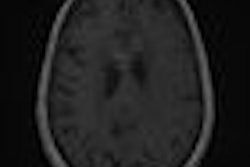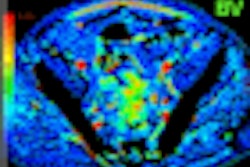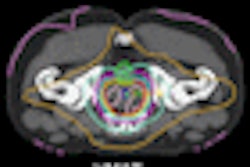A large study of breast cancer patients reveals that only 5% of patients with cancer-positive internal mammary nodes who receive radiation therapy (RT) will die of breast cancer recurrence within five years. This survival rate is comparable to patients with positive axillary lymph nodes who receive radiation therapy.
The study, published in the September 2008 issue of the Annals of Oncology (Vol. 19:9, pp. 1553-1560), evaluated the survival rate of 663 women diagnosed with breast cancer between September 1998 and April 2006 who had biopsies of their internal mammary nodes at the Istituto Europeo di Oncologia in Milan, Italy.
The results are in marked contrast to those of an earlier study of 737 breast cancer patients who had mastectomies, with or without internal mammary node dissection, over a four-year period between 1964 and 1968, but who did not receive postoperative radiation therapy. In 1999, Dr. Umberto Veronesi, a breast surgeon and director at the Milan facility and principal investigator of both studies, reported that 53.5% of the women died as a result of breast cancer during the 30-year interval period.
While strongly advocating radiation therapy, the researchers of the current study believe patients diagnosed with a tumor in the inner quadrants of the breast who receive radiation therapy of the internal mammary chain -- without a biopsy of one or more internal mammary nodes -- may be overtreated, and may be receiving more radiation than they actually need if mammary nodes are negative. The researchers contend that only patients with pathologically confirmed internal mammary node metastases should have radiation therapy of their internal mammary chain.
In addition to reporting on the positive survival rates, the facility's new study makes a case for the importance of including both axillary node and internal mammary node biopsies to plan appropriate local and systemic treatments.
Patients recruited for the study ranged in age from 22 to 80 (average age, 50.2 years), had not been previously diagnosed with cancer, and were not pregnant. In the patient population, 520 women (78.4%) had a carcinoma of the inner quadrants, 112 (16.9%) had a primary carcinoma in the supra-areolar or underareolar portion of the breast, and 24 (3.6%) had a carcinoma of the areolar region. Only seven patients had a carcinoma in the outer part of the breast.
The majority of cancers (82.5%) were ductal carcinoma in situ and lobular carcinoma (7.0%), with an average tumor size of 18.9 mm. Cancers were evenly divided between left and right breasts.
Surgery, radiation treatment, and survival
Ninety percent of the women had breast-conservation surgery, and the remainder had mastectomies. Surgical exploration was either guided by a gamma probe that detected radiotracer uptake, or by one or more internal mammary nodes.
For patients who did not have "hot" nodes, the second intercostal space was explored when the carcinoma was located at the supermedial quadrant, and the third intercostal space was explored when the carcinoma was located in the inferomedial quadrant. These were accessed through the surgical incision utilized for the removal of the primary carcinoma when breast-conservation surgery was performed.
Only 40 women did not have lymphoscintigraphy with technetium-99m to identify the sentinel lymph node. Axillary lymph node involvement was positive for 35.1% of the patients, with 125 out of 233 women having only one node involved.
All women who had breast-conserving surgery had adjuvant therapy, either from an external source or through electron intraoperative therapy, and 68 women, or 10.3% of the total cohort, had metastases in the internal mammary nodes. The rate of involvement correlated with tumor size: only 1.9% were found in tumors 10 mm or smaller in diameter.
These women received radiation therapy administered on the internal mammary chain, contoured by the identification of the internal mammary vessels from the first intercostal space to the top of the fourth rib. Lower spaces were excluded, sparing myocardium.
Internal mammary nodes were treated with a separate anterior angled electron and photon beam field, with a prescribed dose of 50 Gy in 2-Gy fractions over a period of five weeks.
Patients were followed an average of 46 months. Women without regional node metastases had a survival rate of 97% at five years, while women with either axillary node or internal mammary node involvement had a survival rate of 92%.
Importance of internal mammary node biopsy
Prognosis worsens with internal mammary node involvement, according to the researchers. "Patients with internal mammary node metastases and no axillary involvement who would be considered stage I with excellent prognosis, become stage II, with a more serious outcome and a need for appropriate adjuvant systemic treatments," Veronesi explained. "When internal mammary node metastasis is discovered, the therapeutic policy should be consistent with the policy for axillary nodes, which if involved are either surgically removed or treated with radiotherapy."
Radiation therapy is more effective than surgical dissection of the internal mammary nodes because it encompasses a wider area of tissues to be sterilized, according to the researchers. They suggest that radiation therapy may prevent pleural metastization by destroying cancer foci involving the pleura superficially.
This type of treatment should not be a substitute for failure by breast surgeons to biopsy internal mammary nodes. Rather, it should be limited to patients with pathologically confirmed internal mammary node metastases.
"The surgical technique [for biopsy] is simple, without important complications, and requires no more than 10- to 15-minute prolongation of the surgical session," Veronesi and colleagues wrote. "We are surprised to see the sophistication of the search for micrometastases and isolated tumor cells ... while the internal mammary nodes are completely ignored by the great majority of the surgeons and pathologists."
By Cynthia Keen
AuntMinnie.com staff writer
December 31, 2008
Related Reading
Breast MRI can guide radiation therapy to lymph nodes, September 22, 2008
Radiotherapy for breast cancer raises heart disease risk, March 7, 2008
Copyright © 2008 AuntMinnie.com



















